Meater 2 Plus meat thermometer review: more accurate cooking
The Meater 2 Plus provides a thinner and more accurate sensor to allow you to get better results on even smaller pieces of meat

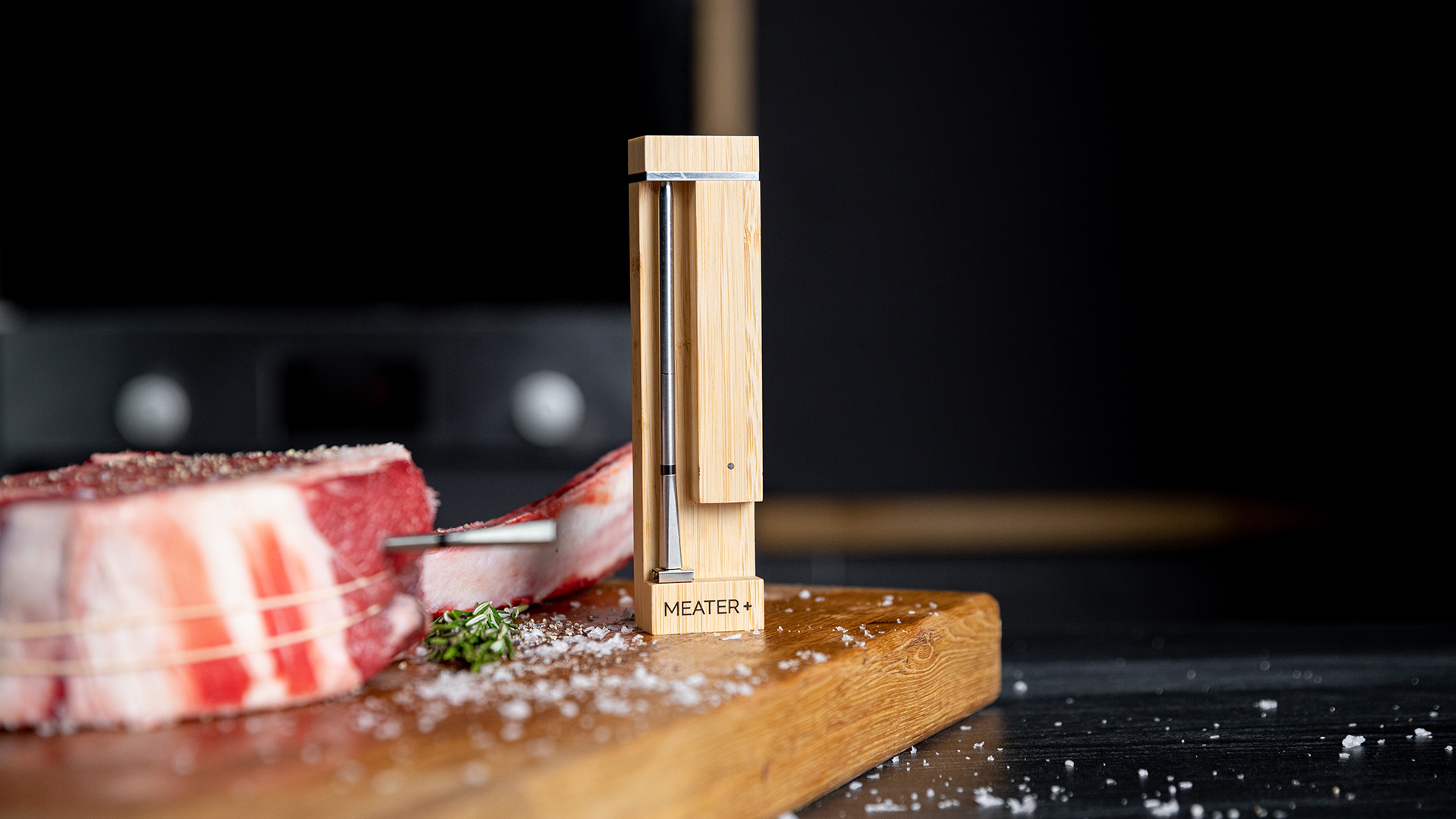
The Meater 2 Plus improves on what was already a great meat thermometer. The more slender form is a big plus, as is the improved temperature range and accuracy.
-
+
Thinner probes are better for smaller cuts of meat
-
+
Extra high max ambient temperature for grill cooking
-
-
No Wi-Fi connection from this base unit, so you need to stay within range
Why you can trust T3

If you've never used a meat thermometer, then you've been missing out on one of the best kitchen tools of all time. These devices let you get an accurate reading inside the meat, so you know when it's ready, without having to cut it open. They are handy for pies, roasts, tray dishes and even reheating dishes.
What makes the Meater thermometer special is that unlike most meat thermometers, where you put the probe in to test after cooking, the Meater sensor goes into the raw meat and gives feedback all the way through the cooking process. Using an app it connects via Bluetooth and gives you reading on your phone, telling you exactly when to take out of the oven and rest the meat.
I reviewed the Meater block last year and found it ideal for barbecuing and oven cooking, especially with larger bits of meat. The new Meater 2 however promises big improvements over the original so I was excited to give it a try.
This model has more sensor points on the probe for more accuracy, it can cope with higher temperatures on the inside and the outside of the meat, so you can even flame grill with it, and the probe is thinner too, so you can use it in small cuts.
The thickness of the probe was a big factor for me, especially as I don't tend to do massive pieces of meat very often. Here's how I got on with the Meater 2 Plus.
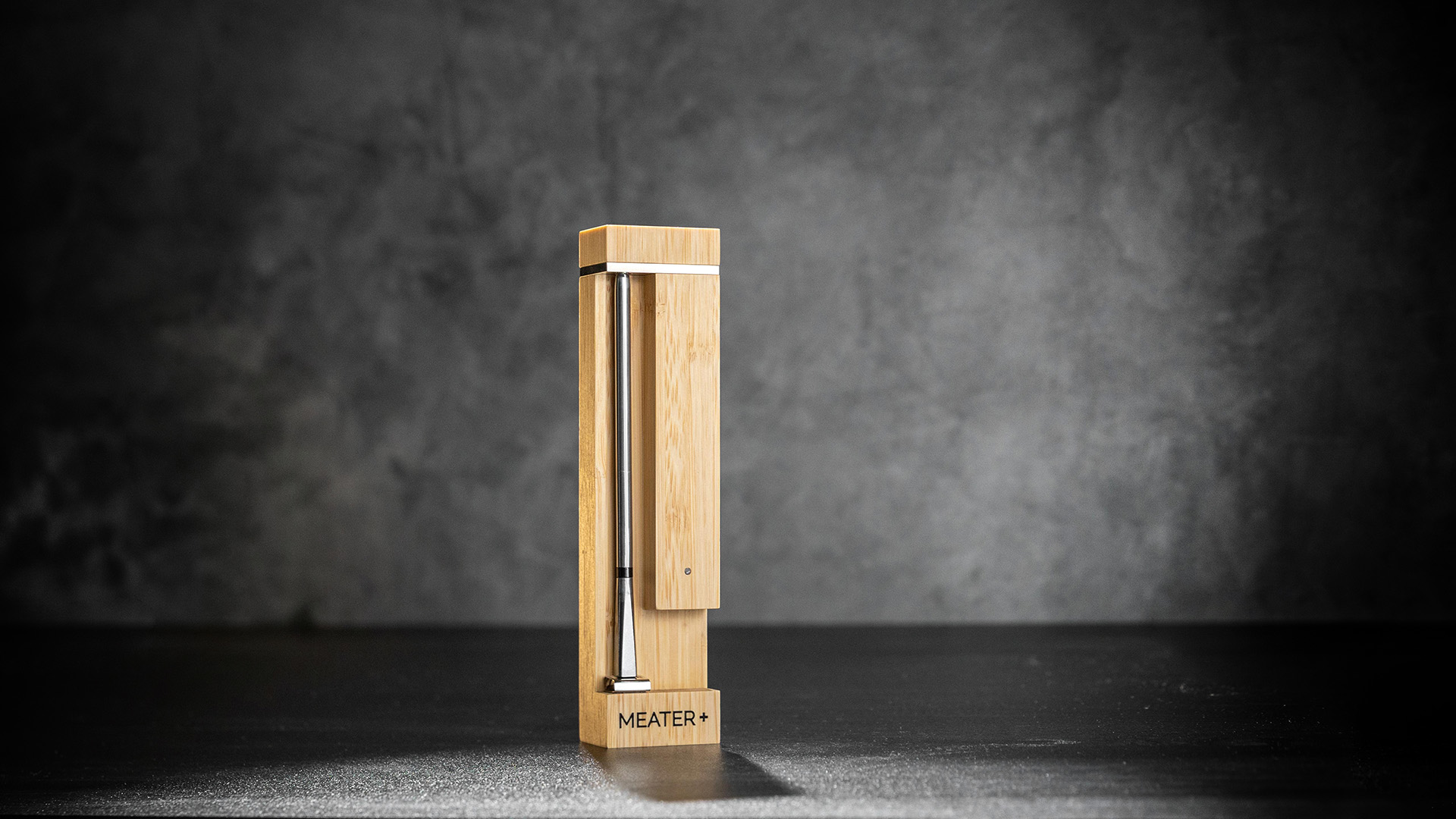
How much is the Meater 2 Plus?
The Meater 2 Plus retails for £119, which is the same as the existing Meater Plus model. This is a single probe model but I suspect there will also be a version of the Meater Block (which includes four sensor probes) available in the near future too.
For most cooking though, a single probe kit is all you need and at this price it's a great deal.
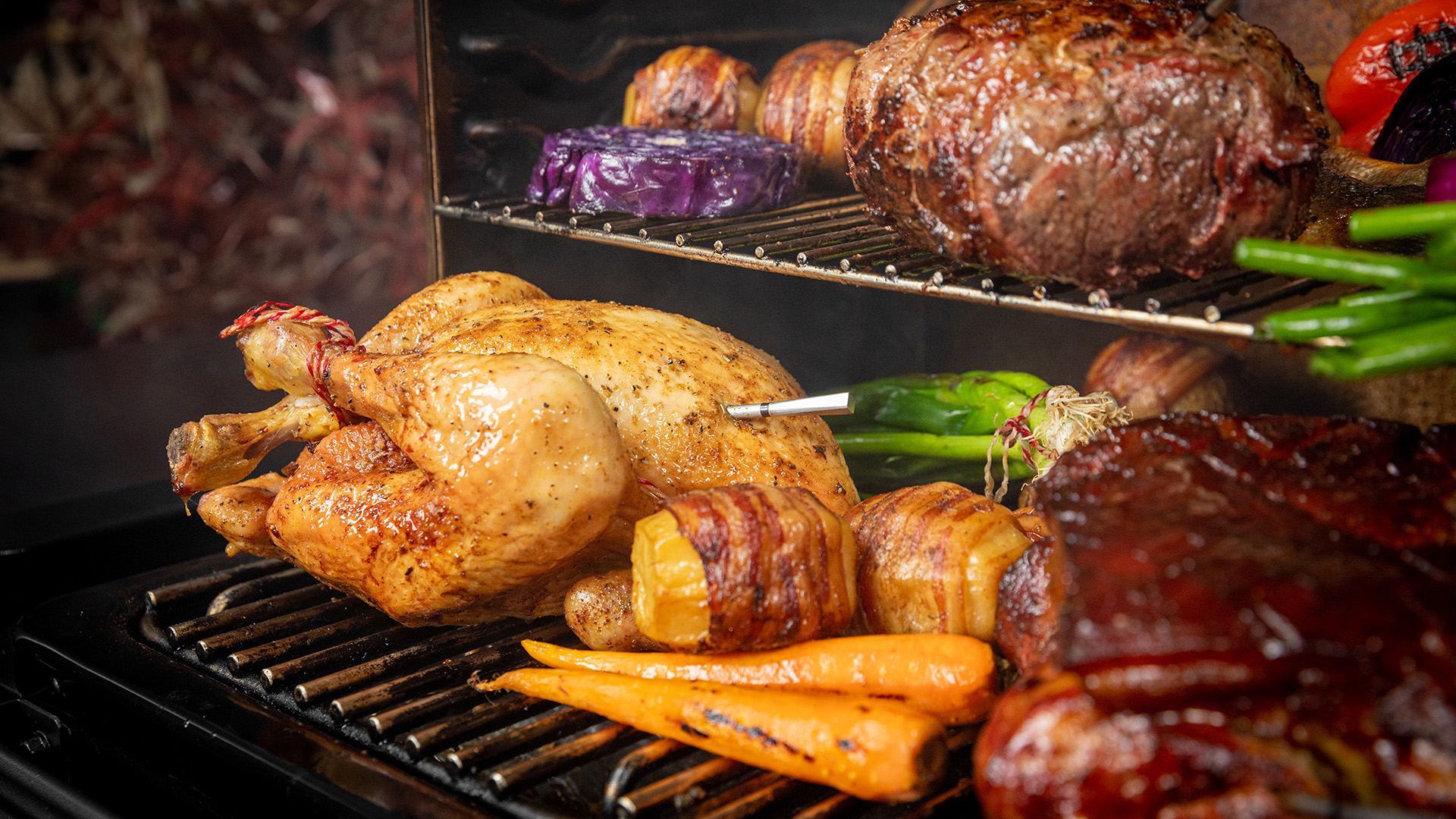
Design and features
The Meater 2 Plus comes in a small wooden case which acts as the base unit and charging station for the probe. It's quite a small case – 157 x 23 x 37mm – so will sit happily on your worktop, in a drawer, or attached to your fridge or any cool metal surface thanks to the magnets on the back.
A single AAA battery inside the base unit recharges the probe once it's returned to the case and will charge up to 50% in 15 minutes, which is enough for 12 hours of temperature readings.
The probe itself is around 125mm long and about 5mm wide. There's a pointed end to help insert it into the meat and a marking on the stainless steel of how far needs to be in the meat. There's a thin ceramic band at the top to help send the readings back to your phone and a square end that needs to stay outside the meat for the ambient temperature.
There are more sensor points inside the probe than before. You now get five internal points and one ambient temperature point, all with a +/-0.3 degrees Celsius accuracy. This will read up to 105ºC (221ºF) for internal temperatures and 500ºC (932ºF) for ambient temperatures, so is even better for the barbecue grill (the previous model topped out at 275ºC).
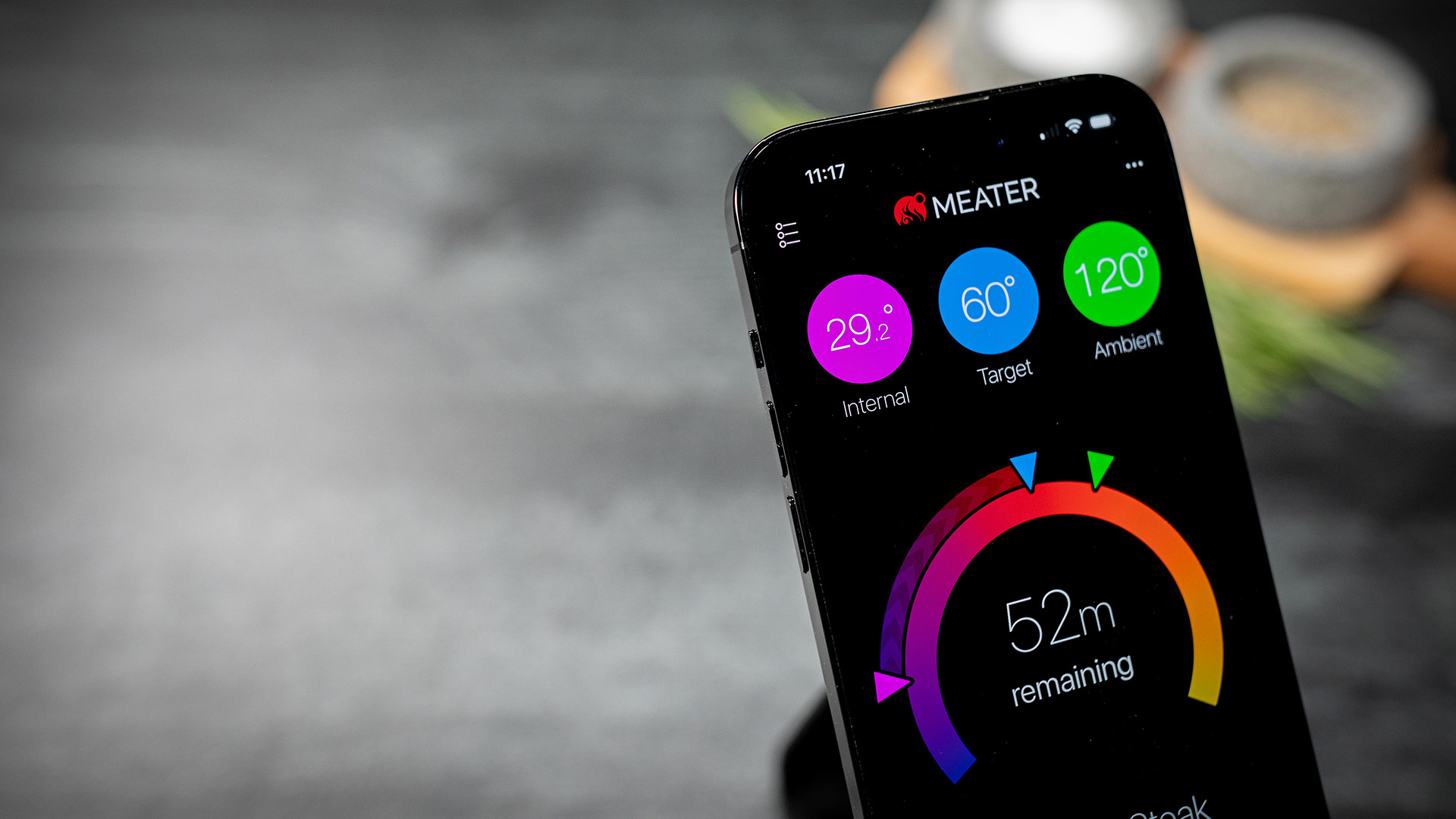
App and set up
The Meater app is the heart of the experience and what makes this such an appealing product. There are other devices that can constantly read the temperature inside your dish but none that provide the feedback that the Meater app does.
Once you've set up your Meater account, which is only a few short steps, connecting the device to your phone is really easy. The app talks you through the set-up process – you only need to pause to give the battery time to charge the probe before removing it to pair.
The app features a Master Class section with a range of recipes for both indoor and outdoor cooking, complete with video guides. There's also a Spotlight section which combines news and offers from Meater with new and seasonal recipe additions.
The main feature though is the Cooks section. Once connected to your probe (will reconnect as soon as it's taken out of the base unit) it will start to give you both ambient and internal readings. You can then set up a cook.
Setting up a cook will ask you what meat you are cooking and then recommend a finished temperature. Along with the recommended temperature, it will give you options depending on whether you want it rare, medium or well done. You can also adjust the temperature manually.
Once cooking, the app will give you an estimated time to reach temperature, based on the current ambient readings. It will then alert you when the meat should be taken off the heat (or out of the oven) to rest. Often this is before it reaches the desired temperature, as the meat will keep cooking.
You can customise what alerts the app gives you, for instance, if the ambient or internal temperatures go too high or too low, or the amount of time before the cook ends, so you can prepare your sides.
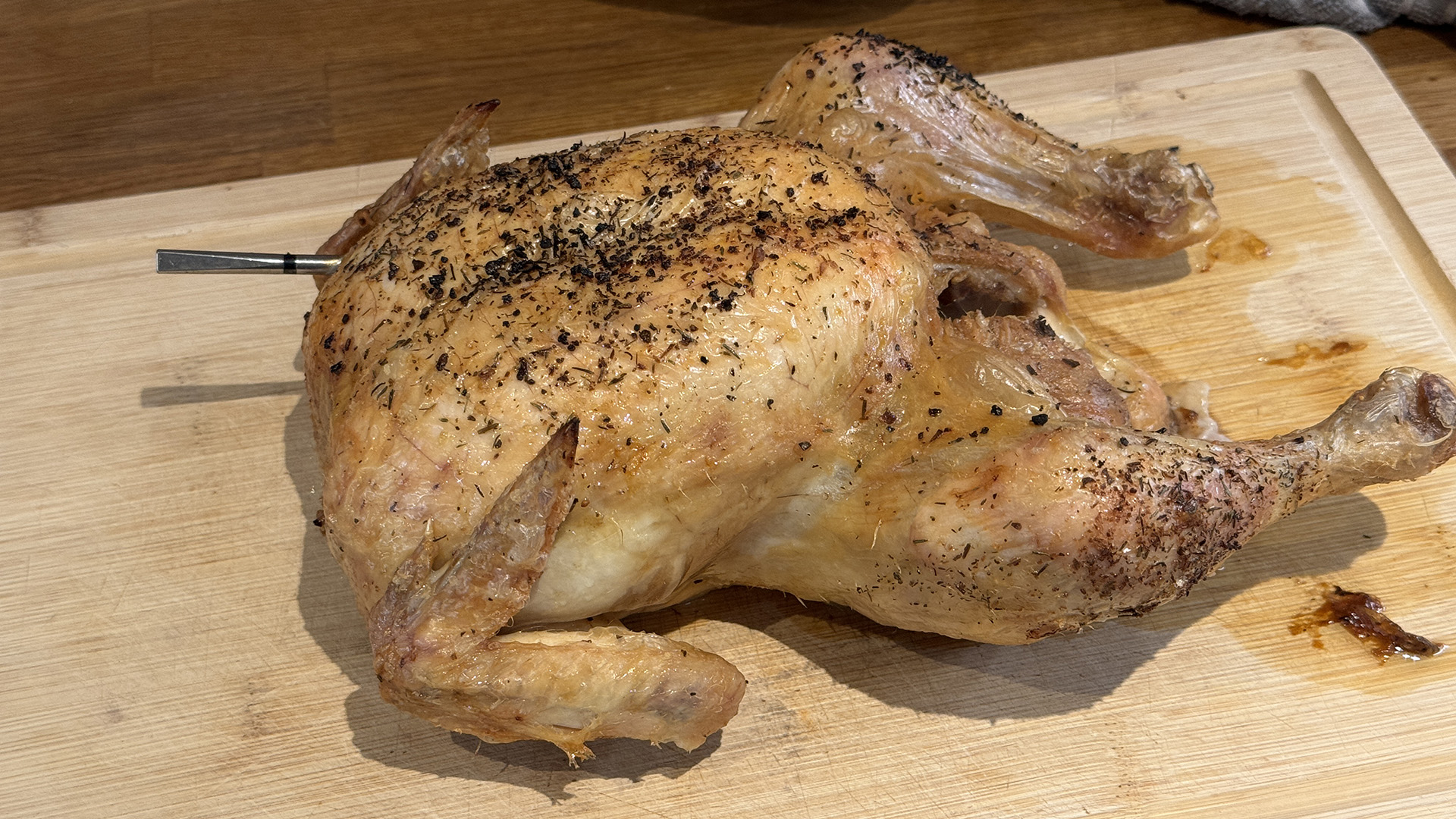
Cooking
Once you have selected your cut of meat and the final temperature you want it at, the app will tell you to insert the probe and provide video guidance if it's your first time using it. The app will then take some time to calculate the estimated cooking time, based on the current ambient temperature and the internal temperature, which can take around 10 minutes.
This model relies on Bluetooth, so it's important to keep the base unit close to the oven or grill so that it keeps the connection. Your phone then needs to be within Bluetooth range of the base unit – so generally in the same room is fine.
One new feature I've noticed on the app is that it now makes use of the iPhone's Dynamic Island when cooking, providing the current ambient and internal temperatures on the left, and the time remaining on the right.
By default, the app alerts you when there are five minutes left of cooking time. It then tells you when to remove the meat from the heat for resting. When cooking a whole chicken, I found the Meater 2 Plus told me to remove the bird from the oven earlier than I would normally do. However, I trusted it and watched the temperature continue to rise as it rested.
I feel that chicken is a tougher meat to gauge though, and I was much more trusting when it came to cooking a joint of beef or some large steaks. With these, the temperature and colour description was spot on when I cut the meat.
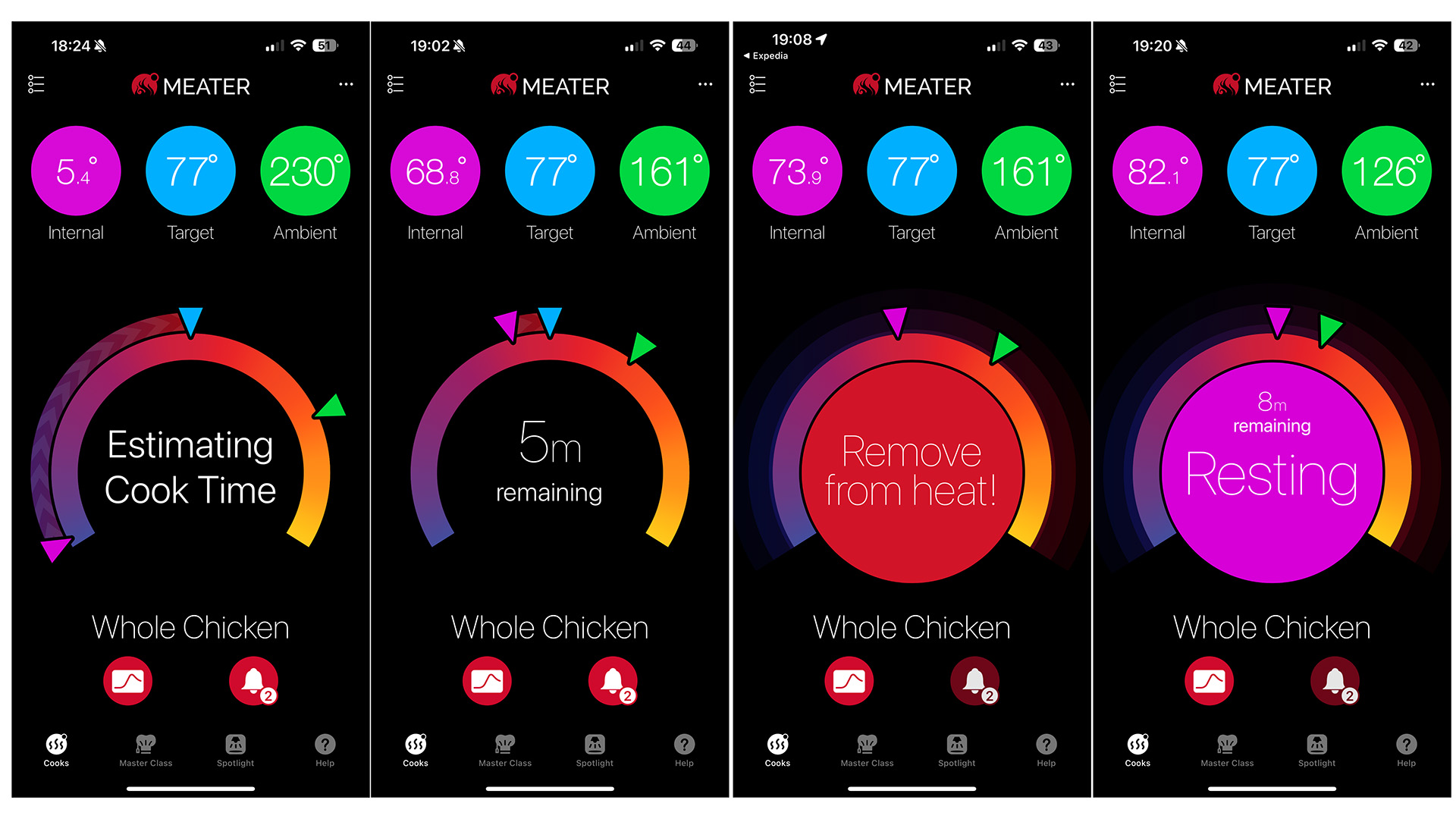
Verdict
Meater has managed to up its game on an already great product with the Meater 2 Plus. The narrower probes are much easier to use on more delicate and smaller cuts of meat, and the extra temperature range means you can happily cook on an open flame without worry.
I did like the fact that the temperature reading now comes with tenth-of-a-degree changes, rather than just whole numbers. While I previously didn't have any problems with the accuracy of the Meater devices, this does seem to really nail both the internal temperature and the ambient temperature – better than my over does (as I know it's often hotter than it claims).
If you regularly cook a roast or larger cuts of meat, you need a Meater device, and the Meater 2 Plus is the best model on the market.
Sign up to the T3 newsletter for smarter living straight to your inbox
Get all the latest news, reviews, deals and buying guides on gorgeous tech, home and active products from the T3 experts
As T3's Editor-in-Chief, Mat Gallagher has his finger on the pulse for the latest advances in technology. He has written about technology since 2003 and after stints in Beijing, Hong Kong and Chicago is now based in the UK. He’s a true lover of gadgets, but especially anything that involves cameras, Apple, electric cars, musical instruments or travel.
-
 Smeg adds a touch of navy sophistication to its iconic breakfast set
Smeg adds a touch of navy sophistication to its iconic breakfast setIt's a minimalist's dream
By Lizzie Wilmot Published
-
 My most anticipated Netflix movie of the year gets a wild new trailer
My most anticipated Netflix movie of the year gets a wild new trailerHavoc looks pretty unbelievable
By Max Freeman-Mills Published
-
 Forget the tariffs, Paddington 3 is now on Netflix to bring you joy
Forget the tariffs, Paddington 3 is now on Netflix to bring you joyPaddington In Peru is now streaming on Netflix
By Mike Lowe Published